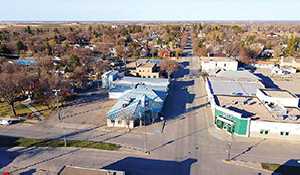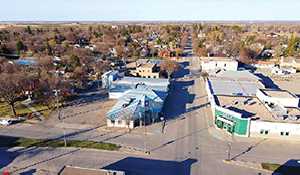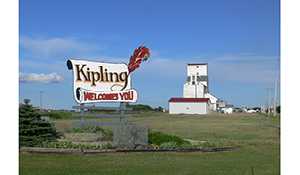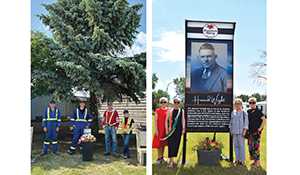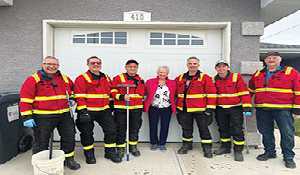Minister will ask SaskTel to look at prioritizing border areas
New cell technology should make it easier to cover an area up to the border without cosssing it
January 24, 2023, 3:59 pm
Sierra D'Souza Butts
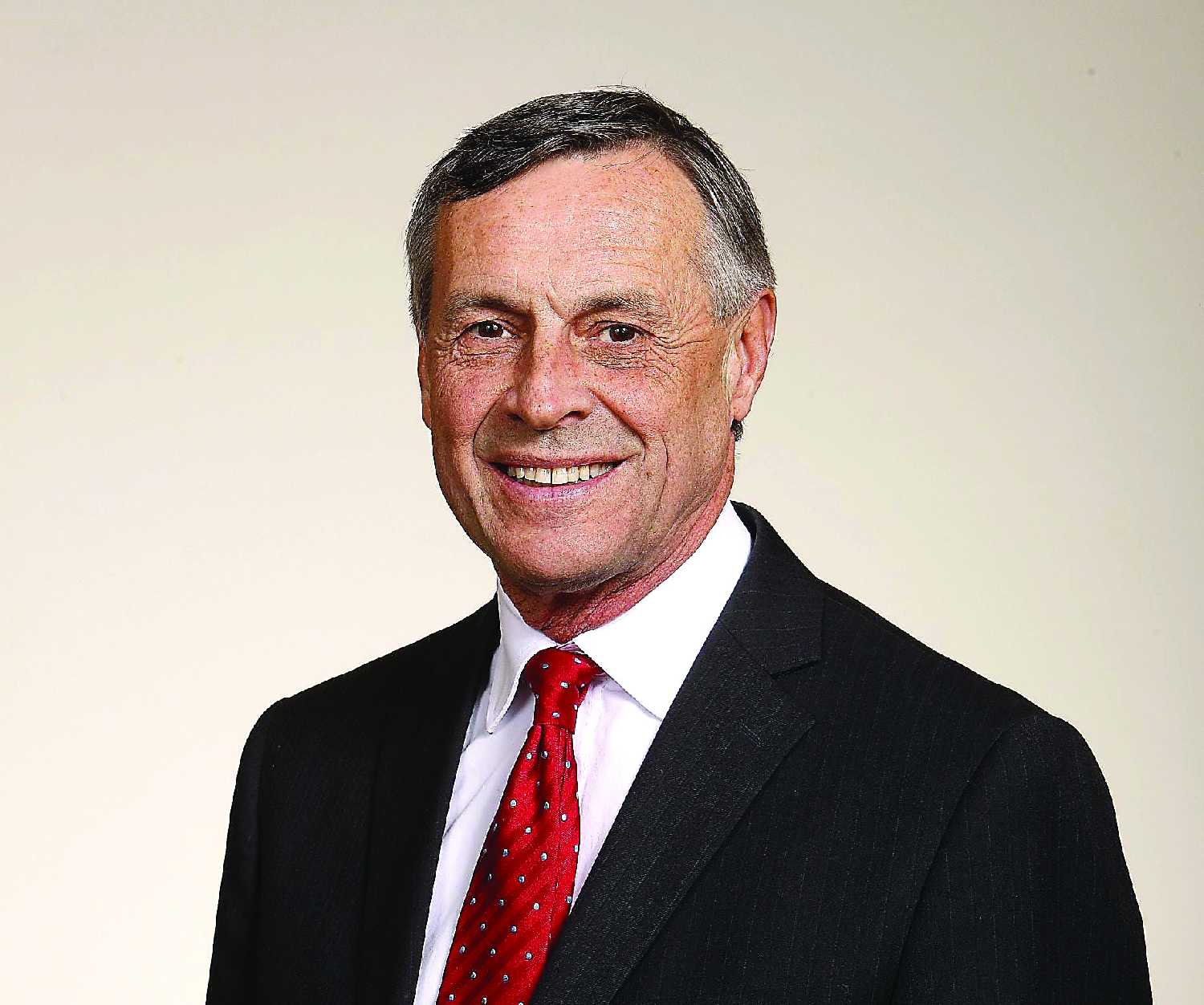

After becoming aware through the World-Spectator of poor cell phone reception along the provincial Sask-Manitoba border and it affecting residents’ access to emergency services in rural areas, the minister responsible for SaskTel, Don Morgan, stated the crown corporation will be looking into the matter.
Many people living along the Manitoba border area complain of limited cell service the closer you get to the border.
SaskTel said that the problem is the federal Canadian Radio-Television and Telecommunications Commission does not want SaskTel signals bleeding across the border into Manitoba, as SaskTel is licenced to serve only Saskatchewan.
The company says current technology is imprecise, so the signal cannot go too close to the border without creating a danger of the signal bleeding into Manitoba.
Communities like Welwyn, Fleming, the RM of Moosomin, Fleming and Maryfield have been experiencing bad cellphone reception.
According to one first responder in Welwyn, coverage is so bad that calls to first responders’ cell phones often do not go through, or messages come through on the cell phones hours too late.
Some people have had trouble making 911 calls from along and near the border, as the calls are continually dropped.
SaskTel says that should be partially fixed by new cell technology which allows a more precise signal footprint.
The technology is being rolled out across the province, on 1,000 cell towers, over five years.
In an interview with the World-Spectator Thursday, Morgan was made aware of the issues along the boarder and said he will ask SaskTel to see if the new technology can be rolled out as soon as possible in border areas with cell coverage issues.
“If we’ve got gaps, those are gaps that we can look at on an individual basis,” he said.
“There is an issue immediately close to the border areas in the province.
“The licenses to SaskTel do not allow us to broadcast out of the province and so, as you’re approaching the Saskatchewan-Manitoba border, the signal will drop off.”
With SaskTel’s plan to invest more than $1.5 billion to expand its 5G network across the province in the next five years, Morgan was asked how the government prioritzes which locations are worked on first.
“SaskTel prepares a list. They focus on where traffic is and the amount of subscribers there would be in a given area,” he said.
“If you’re in an area where there’s a small town close to the border, they are more likely to have a large scale tower.
If you’re in an area where it comes up to the border and there’s no traffic, then all you have are the towers that go along the highway.
“SaskTel 5G will have huge bandwidth where you have coverage.”
Morgan said 5G may be a solution for border areas. “The signal itself does not go any further than a 4G signal, but it may well be able to be controlled better, and maybe they want to look at whether they need to put up another tower or are able to control it,” said Morgan.
“If I know the areas that are there, we can certainly go back to SaskTel and ask them to look at it.”
“Based on your request for the interview, we asked Sask-Tel to have a look at where it is at on provincial border areas,” Morgan said.
“What I can do is, I’ll have SaskTel give us some answers for the area that’s immediately around where the concerns are.“A point that SaskTel can make is probably very accurate, that you can be more precise with it. We’ll have a discussion with them and see if we can reconfigure on it.”
“Right now we’ve got over 1,000 towers that need to, I don’t have a specific time frame for Maryfield and Welwyn, but those are ones we’re going to have to ask them to look carefully at.”
“We will not be able to service grid roads or something that’s off the major highways, but we would be able to cover all of the major highways in and through the province.
“We’ve got relatively good coverage on those, we’ve also started to move into smaller towns and business communities. I know SaskTel is moving ahead with fibre network into those areas because they have to have the fibre infrastructure that goes out to the 5G towers.
“But, if there are areas that have a gap, then we need to well look at and address them as well.
“We’re also looking at some issues of coverage in the north.
“Along the Hanson Lake Road, we’re looking for the federal government to partner with us on some of those things. We are working on those initiatives.”
Morgan spoke about why it is a conflict if SaskTel networks go across provincial borders under Canadian Radio-television and Telecommunications
Commission (CRTC) requirements.
“It’s how the licensing works. The licensing is done by Innovation, Science and Economic Development Canada (ISED) and it’s a prohibition,” he said.
“We can’t do it because it interferes with whoever the competing provider is on that side of the border.
“Bizarrely enough on the south side of the border, where we enter to the U.S., if you drive close enough to the border in the Estevan area, you’ll get three to four miles into Canada and get an email saying you’re now roaming in the U.S. because that’s where our signal (starts) running out, and the U.S. has no such limitations.
He spoke about how upgrading SaskTel networks to 5G will improve internet speed.
“It’s an increased amount of bandwidth. If you have a connection there you’ll be able to download a game, newspaper, or movie, whatever else, almost instantaneously. It is blindly fast when you have the coverage,” he said.
Morgan was asked if he heard about poor connectivity issues happening on the Sask-Alberta border, and if residents were having safety concerns as well.
“I’m not aware of it on that side. I’m aware of it on your side as a result of this call,” he said.
“I know we would like to have better coverage in a number of places. The good thing is as our province grows, there’s a growing demand for more bandwidth. People are using their devices more and more which makes it a better financial option for us to try and increase coverage more,
by adding more capital to it.”
Aside from upgrading SaskTel networks across the province to 5G, the crown corporation also invested an additional $100 million in its Rural Fibre Initiative to expand its infiNET program.
There are six phases of the program, with communities or Phase 6 still being finalized but expected to be fully constructed by the project’s deadline of March 2025.
Morgan spoke about what SaskTel is prioritizing at this time.
“Two to four years ago, they spent several hundred millions of dollars upgrading the cell service across the province. They added a number of internet towers and that is where we got up to the 1,000 towers that exist in the province now,” he said.
“We’re doing towers everywhere where there was a major highway going through, and they’ve been going back to add towers where there are gaps.
“If there are gaps near the border than that’s something we’re going to have to work with them on, to try and get
covered off.
“If you have someone who has got a coverage issue on the major roads, I ask you have them call my office and we’ll have a look at it.”











